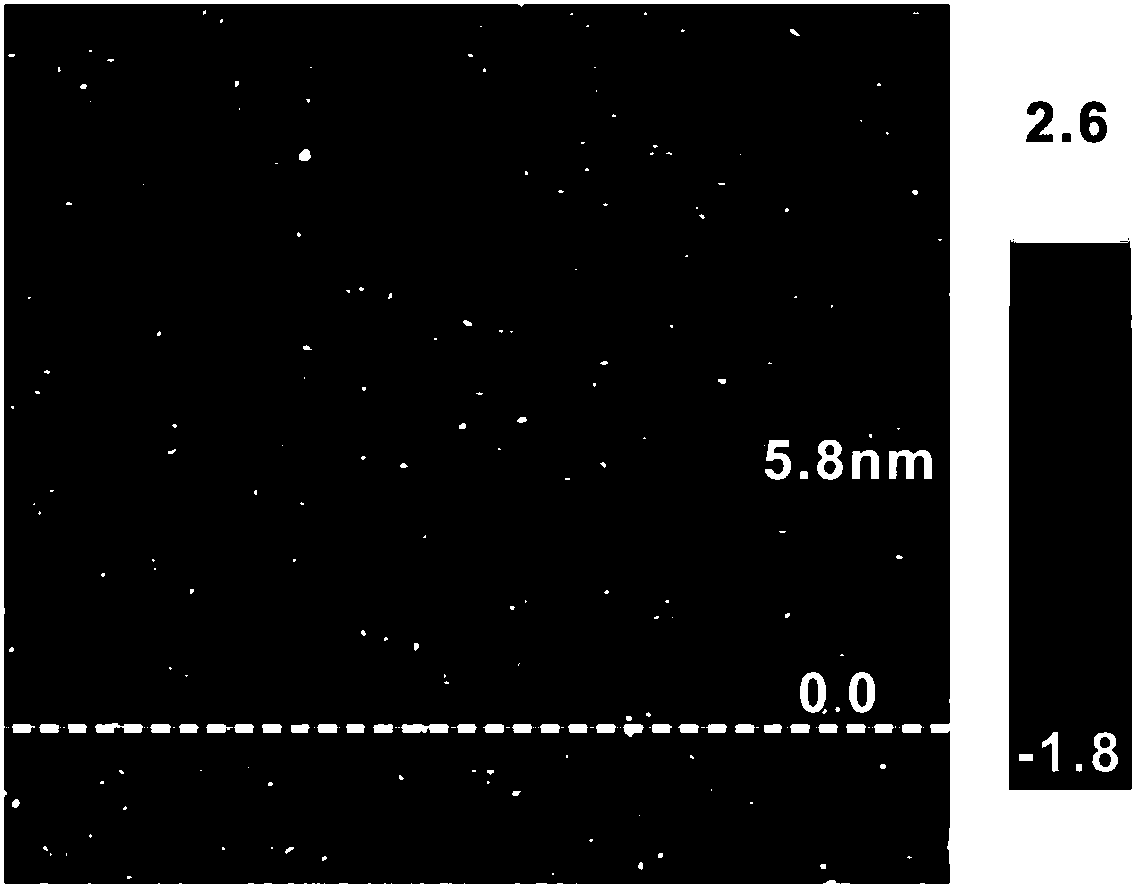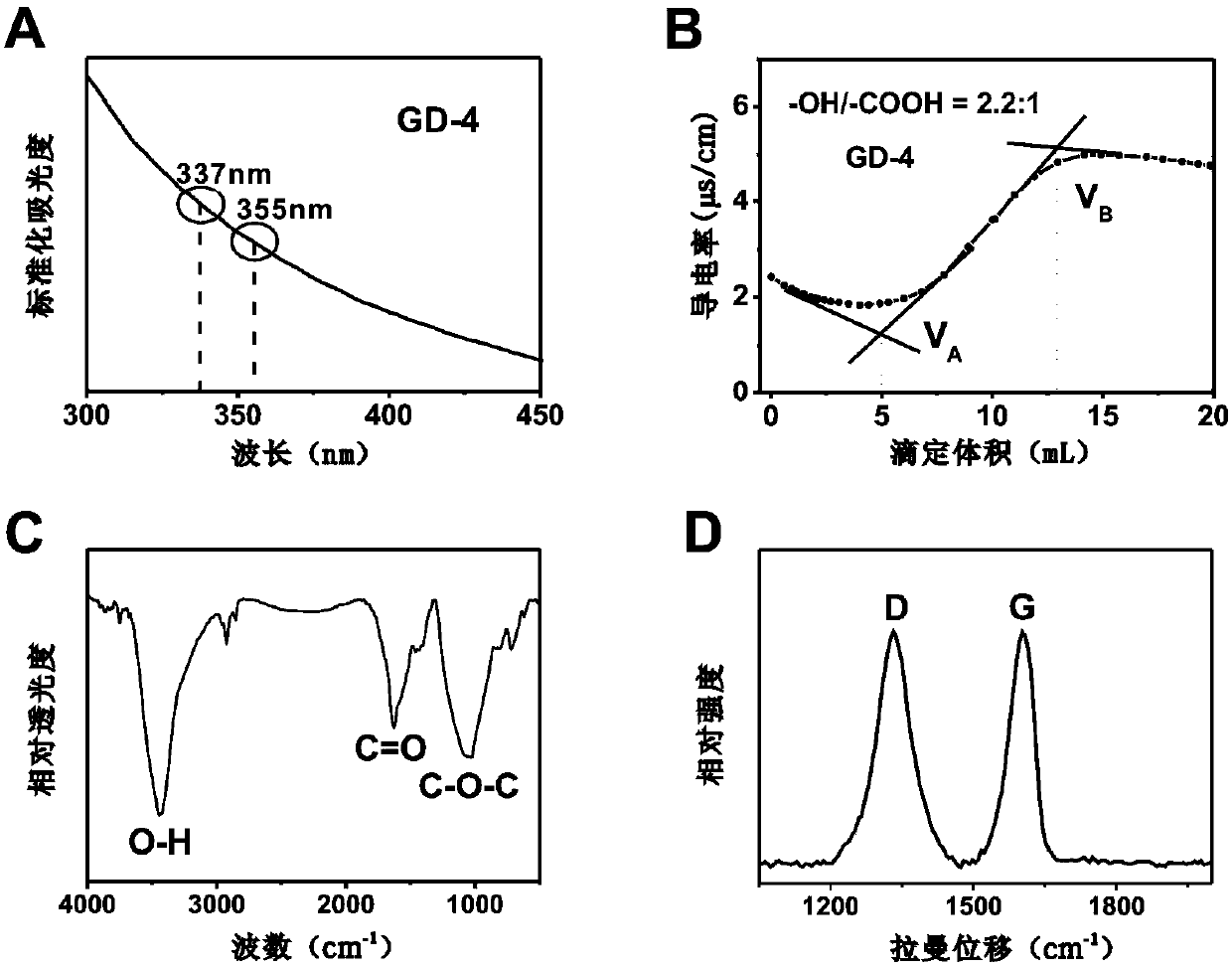Graphite structure type nano-material with controllable chemical functional groups on surface, preparation method thereof, and application thereof in mass spectrometry
A technology of graphite structure and nanomaterials, applied in nanotechnology for materials and surface science, material analysis through electromagnetic means, graphite, etc., can solve the problems of sensitive detection of small molecules and difficulties in precise imaging, and achieve the realization of tissue slices Effects of mass spectrometry imaging, mass spectrogram cleaning, speed and sensitivity improvement
- Summary
- Abstract
- Description
- Claims
- Application Information
AI Technical Summary
Problems solved by technology
Method used
Image
Examples
preparation example Construction
[0050] The present invention also provides a preparation method of graphite-structured nanomaterials, comprising:
[0051] Place two graphite rods as anode and cathode respectively in deionized water for electrolysis to obtain unreduced graphite points;
[0052] React unreduced graphite dots with sodium borohydride to obtain graphite-structured nanomaterials;
[0053] Wherein, the dosage ratio of the unreduced graphite dots to the sodium borohydride is 100 mg: (13-17) mmol.
[0054] According to the present invention, the present invention places two graphite rods respectively as anode and cathode in deionized water for electrolysis to obtain unreduced graphite points; wherein, the voltage of the electrolysis is preferably 30V; the time of the electrolysis is preferably 12 ~14 days; during the electrolysis process, it is preferable to keep high-intensity stirring continuously; the present invention also preferably filters and centrifuges the obtained graphite dots to obtain u...
Embodiment 1
[0067] The preparation of embodiment 1 graphite structure type nanomaterial
[0068] The initial graphitic dots were obtained by electrochemical corrosion. First, two graphite rods (99.99%, AlfaAesar Co.Ltd) were inserted into deionized water in parallel, one was used as an anode and the other was used as a cathode, while ensuring that the static voltage between the two poles was 30V. The whole electrolysis process lasted for two weeks, and continued Maintain high-intensity magnetic stirring, and then produce the most initial graphite points. But at this time, the graphite point solution is also mixed with large graphite particles, so it needs to be filtered and high-speed centrifuged (22000rpm, 30min) to obtain the unreduced graphite point with uniform particle size and very good water solubility used in the final experiment ( Denoted as GD1).
[0069] The graphite point (GD-1) 100mg that takes by weighing is dissolved in 100ml water, then adds an appropriate amount of sodi...
Embodiment 2
[0072] Example 2 MALDI-TOF MS detection of graphite dots (GD-2) as a matrix
[0073] 1) The MALDI-MS analysis and detection process uses a Bruker Ultraflex III TOF / TOF mass spectrometer equipped with a 355nm Nd:YAG laser. Its reflection positive and negative ion modes and tandem mass spectrometry were used in the detection. The drop sample method used is mainly the two-layer method. First, the graphite dot solution (1 μL, 1 mg / mL) is dropped on the MALDI target plate, and dried naturally at room temperature to form a matrix layer, and then the sample to be analyzed (1 μL ) was dropped on the matrix layer to fully crystallize the sample and graphite points, and then dried at room temperature and sent to the MALDI MS vacuum chamber for detection.
[0074] Specifically, firstly, the mass spectrometry detection of the pure matrix was carried out without adding any analyte, and the results are shown in Figure 4 , Figure 4 It is the background noise of GD-2 and traditional matr...
PUM
 Login to View More
Login to View More Abstract
Description
Claims
Application Information
 Login to View More
Login to View More - R&D
- Intellectual Property
- Life Sciences
- Materials
- Tech Scout
- Unparalleled Data Quality
- Higher Quality Content
- 60% Fewer Hallucinations
Browse by: Latest US Patents, China's latest patents, Technical Efficacy Thesaurus, Application Domain, Technology Topic, Popular Technical Reports.
© 2025 PatSnap. All rights reserved.Legal|Privacy policy|Modern Slavery Act Transparency Statement|Sitemap|About US| Contact US: help@patsnap.com



